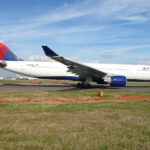Airbus is currently working on the HERON project. This project is named after the acronym «Highly Efficient gReen OperatioNs», whose main objective is to demonstrate how the environmental footprint of aviation can be reduced.
This program is part of the Single European Sky ATM Research (SESAR) Programme Joint Undertaking, which is responsible for coordinating and focusing all European Union research and development activities in the field of air traffic management. HERON seeks to innovate in procedures ranging from more efficient aircraft operations to air traffic optimization.
In addition to Airbus, 25 partners from 10 countries are involved in the HERON program. The program will run for three years. HERON partners include airlines, airports, service providers and air traffic control organizations.
From ALBATROSS to HERON:
HERON continues along the lines of the two-year SESAR program, better known as ALBATROSS. This program conducted a series of tests throughout Europe to promote flights with the lowest possible fuel consumption.
ALBATROSS applied innovations in flight operations by optimizing the entire phase from climb to landing. It also implemented hybrid assistance for ground movements.
Engine-less taxiing and more
The HERON project seeks to optimize ground operations, thereby reducing the impact of aviation on the environment. To this end, it proposes to innovate in ground movement procedures such as the taxiing of aircraft without engines, and an optimization of taxi routes to make traffic flow smoother and avoid waits that lead to excessive fuel consumption.
It will also include the demonstration of Green Apron Management, which through the use of sensors and artificial intelligence will optimize aircraft handling during layovers, making it more predictable and efficient.
Also in the air
The impact of aviation on the environment is also generated in the air. Poor airspace management and traffic management generate excess carbon emissions. HERON will seek to improve air traffic control management of flight paths through greater network coordination.
In another work area, HERON will seek to implement smoother approaches, with continuous descents as aircraft arrive at the destination airport. The airports selected for this program are Brussels, Istanbul, Warsaw, Calvi and Sain-Nazaire.
HERON seeks to align with the objective of pursuing the deployment of mature solutions as steps towards achieving the air transport industry’s goal of «net zero carbon emissions by 2050», set by IATA, ATAG and ICAO.














